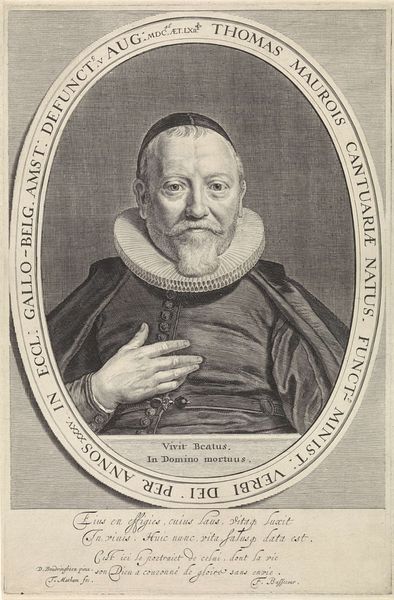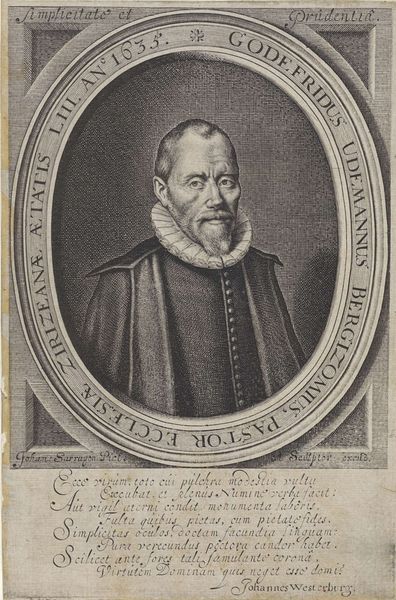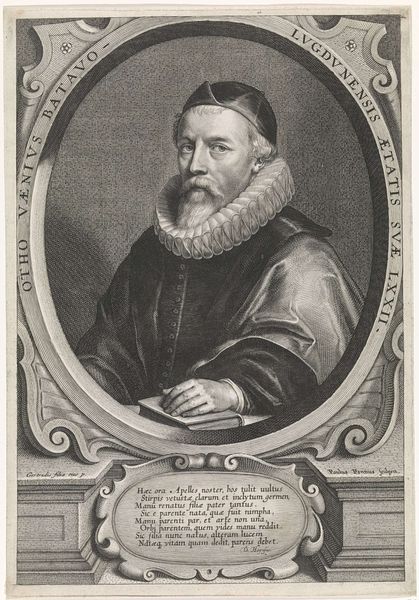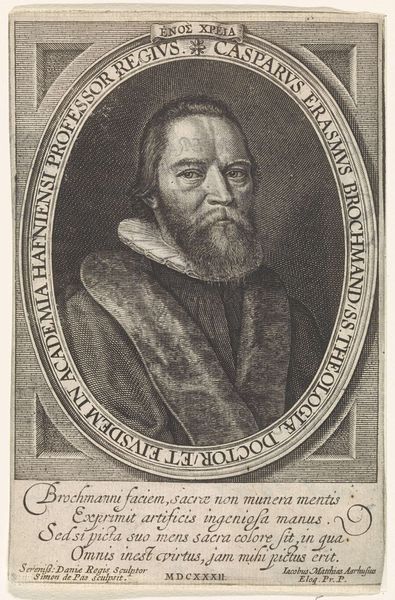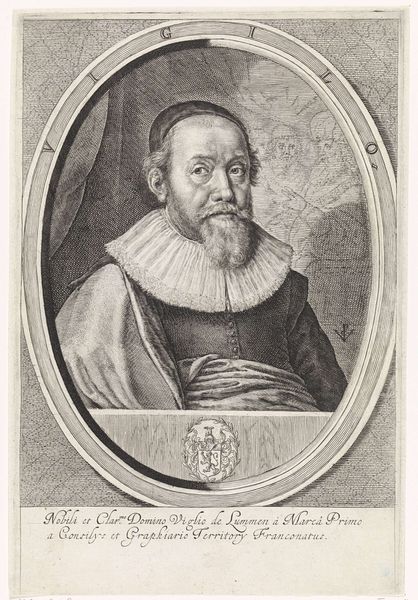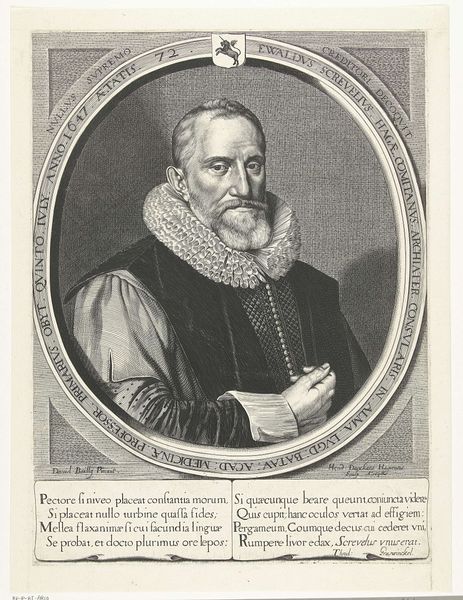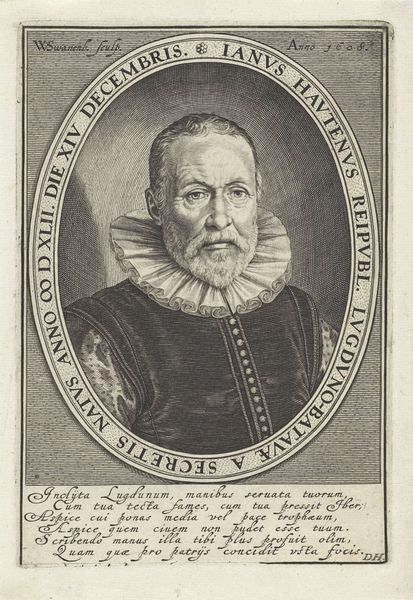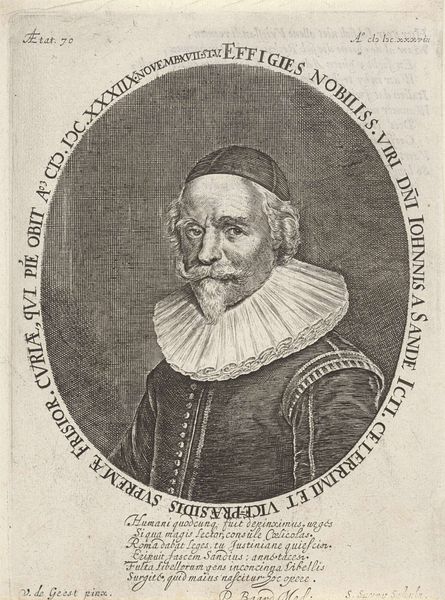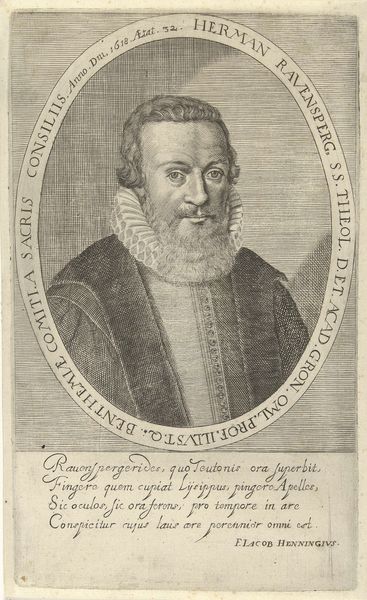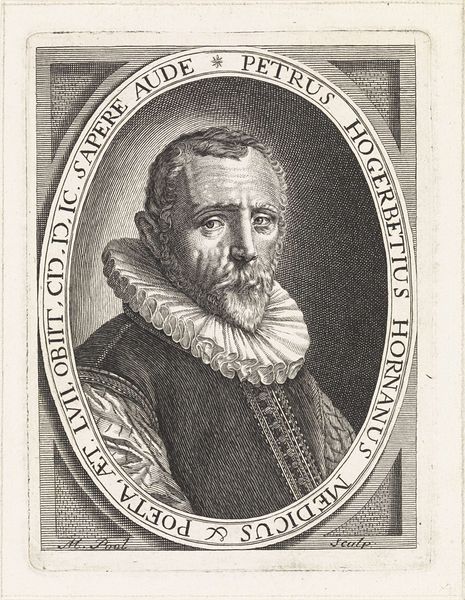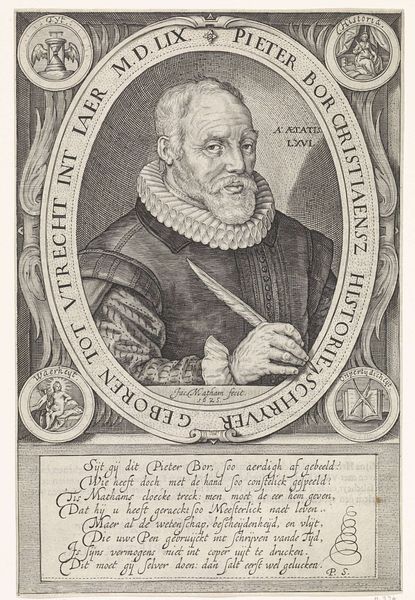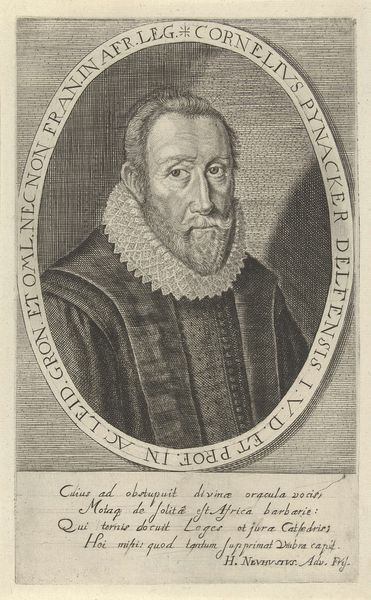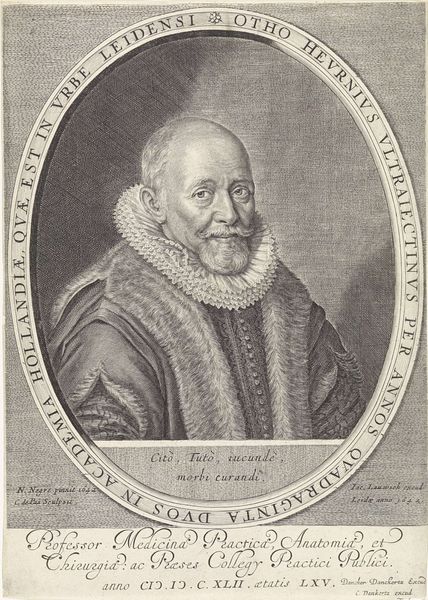
print, engraving
#
portrait
#
baroque
# print
#
old engraving style
#
historical photography
#
history-painting
#
engraving
Dimensions: height 296 mm, width 187 mm
Copyright: Rijks Museum: Open Domain
Curator: We’re looking at "Portret van Thomas Maurois," a print created sometime after 1646. Editor: It's rather stark, isn’t it? The high contrast and delicate lines give it a feeling of solemnity. I’m struck by the intricate detail in the ruff and the soft texture of the beard, particularly impressive given the medium is print. Curator: Indeed. This print is a testament to the power of portraiture during the Baroque era, when the rising merchant class embraced ways to immortalize themselves. Thomas Maurois, whose likeness we see here, was clearly someone of status to warrant such a finely crafted memorial. Editor: Agreed, and it is clear to me that this would require tremendous skill in crafting the plate and the quality of paper to retain that much detail in the finished work. Curator: We see a similar demand for increasingly detailed portraits as we approach industrial production methods. Editor: The act of producing engravings like this in that era are not exactly mass produced though, so, would you really agree that its reflective of that level of social power, even at that time? Curator: I am always of the belief that portraiture during the Baroque was a way of participating in this movement of wealthy and influential men wanting to further influence the zeitgeist. To me, it shows the dawn of commercial markets that we all love, and that art both impacts it and has a product of it. Editor: Well, looking at this through a strictly material lens, I can concede that point. Each line, each shade of grey speaks of precise craftsmanship. A tangible artifact tied to labor, class, and even global trade routes which bring that level of detail to life on the plate itself. Curator: Ultimately, it is these complex factors and this ability to see art as a record that helps me understand more about the social times that impacted so many. Editor: For me, it is seeing the marks left from production that humanizes them and reveals a far less clean, linear path of change over time, and allows the stories of artisans, engravers, and merchants to speak just as loud.
Comments
No comments
Be the first to comment and join the conversation on the ultimate creative platform.
